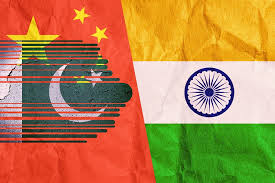In its Worldwide Threat Assessment 2025, the United States Defence Intelligence Agency (DIA) has stated that India now considers China its “primary adversary,” while viewing Pakistan as an “ancillary” security concern that must be managed rather than feared. This strategic outlook reflects India’s evolving defence posture, especially in light of recent cross-border tensions and growing regional influence.
The report noted that Prime Minister Narendra Modi’s defence priorities are likely to focus on boosting India’s global leadership, enhancing military power, and countering China’s assertiveness. The assessment comes shortly after India conducted precision strikes under Operation Sindoor in retaliation to a terror attack in Pahalgam, underscoring New Delhi’s growing readiness to respond militarily.
According to the DIA, India is advancing bilateral defence partnerships across the Indian Ocean region through military exercises, arms sales, joint training, and intelligence sharing. These efforts are part of a broader plan to increase India’s strategic influence and mitigate Chinese expansionism. India is also expanding its involvement in multilateral groupings such as the Quad, BRICS, ASEAN, and the Shanghai Cooperation Organisation to project itself as a responsible and active global player.
While India’s attention remains fixed on the China threat, the report pointed out that Pakistan continues its efforts to modernise its military, including the development of battlefield nuclear weapons. The DIA suggests Pakistan is actively acquiring weapons of mass destruction (WMD)-related materials from foreign intermediaries, maintaining its view of India as an “existential” threat.
On the issue of defence procurement, the report observes that India has reduced its reliance on Russian arms but still depends heavily on Russian spare parts to sustain its fleet of tanks and aircraft, many of which are crucial for maintaining readiness against both China and Pakistan. Despite geopolitical shifts, India is expected to maintain its defence and economic ties with Russia through 2025.
The report also highlighted India’s military advancements in 2024, including testing the nuclear-capable Agni-I Prime and Agni-V missiles and commissioning a second nuclear-powered submarine, marking a significant step in strengthening its nuclear triad.
Although a disengagement agreement was reached between India and China in October 2024 for Depsang and Demchok, the DIA noted that these moves have not resolved the underlying border disputes but have contributed to a temporary easing of tensions since the deadly Galwan clash in 2020.













